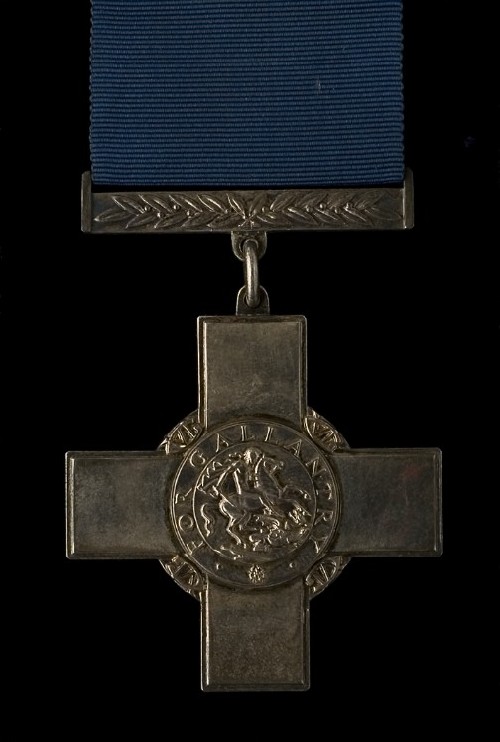
Auction: 9022 - Orders, Decorations, Medals & Militaria
Lot: 419
The 1945 ´War Time Award´ Exchange G.C. to Plant Workman W. Waterson, Who Attempted to Rescue an Unconscious Man From the Carbon-Black Plant at the Works of the General Electric Company, Birmingham; He Succeeded on the Fourth Attempt Despite Being Severely Gassed Himself George Cross (William Waterson 1945), extremely fine, in Royal Mint case of issue, together with the related miniature award, this lacking the suspension bar Estimate £ 4,500-5,500 E.M. London Gazette 2.4.1946 Mr. William Waterson ´´At 4.30 a.m. on Saturday the 18th August, 1945, two workman employed in the carbon-black plant at the works of the General Electric Company, Ltd., Birmingham, were engaged in collecting newly manufactured lamp black from a brick chamber. The men were unprotected and had to withstand a high temperature as well as an unpleasant atmosphere due to particles of oily lamp black, while carbon monoxide was present from burning soot. After a short time Webb, one of the workmen, collapsed and his companion, Albert Edward Stranks, being unable to move him, sought assistance. Breathing apparatus was stored at the works fire station some distance away; while Stranks called for help, the fire alarm was properly sounded. To await the arrival of breathing apparatus would inevitably have resulted in some delay and as the event conclusively proved, there was no time to lose. William Waterson, who was the first to arrive on the scene after the alarm was given, joined Stranks and in order to avoid any delay in going to Webb´´s assistance, without hesitation though fully realising the risk, entered the chamber and attempted to pull the man out. Webb was covered in sweat and carbon black and rescue work was difficult as it was not possible to get a proper grip on him. They were unsuccessful at first and on coming out Stranks collapsed; but Waterson continued to make attempts, entering four times in all. On his last entry he was accompanied by John Thomas Hewitt, a member of the works Fire Brigade, who had then arrived with a rope but not with the breathing apparatus; together they succeeded in bringing Webb out, who, unfortunately, was found to be dead. The hazards were serious owing to the presence of the carbon monoxide gas, intense heat, complete darkness except for the light from a portable acetylene lamp (the carbon covered surroundings absorb all light and give no reflection), the deposit of carbon black and confined space, conditions to which Waterson and Hewitt were unaccustomed. Both Waterson and Stranks suffered badly from gassing and were removed to hospital, and Hewitt suffered to a lesser extent.´´ William Waterson, G.C. was born at Aston, Birmingham, on the 16th June 1904, the son of Thomas and Elizabeth Waterson. At the time of his gallant deed he was working as a labourer at the gas producer plant, approximately 50 yards away from the lamp black chambers at the Carbon Works. After the attempted rescue he spent five days in hospital, followed by a month in a convalescent home, returning to work on the 1st October 1945. For this action he was awarded the Edward Medal in Bronze for Industry, and also a Carnegie Hero Fund Trust Certificate; in 1971 he elected to exchange his Edward Medal for the George Cross. William Waterson died in Birmingham on the 24th March 1973. William Waterson´´s Edward Medal is on display in the Birmingham Museum and Art Gallery.
Sold for
£6,000




